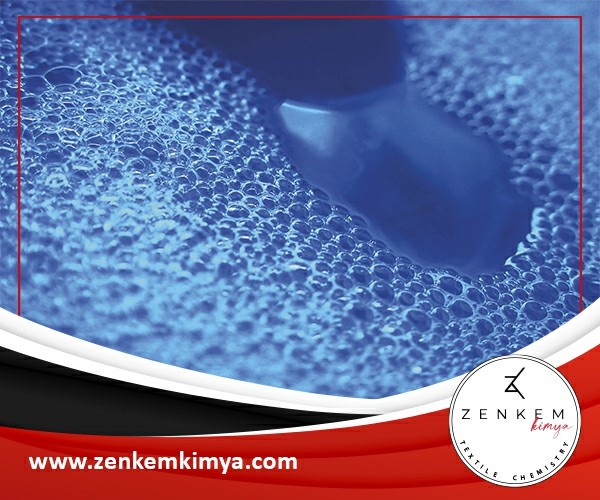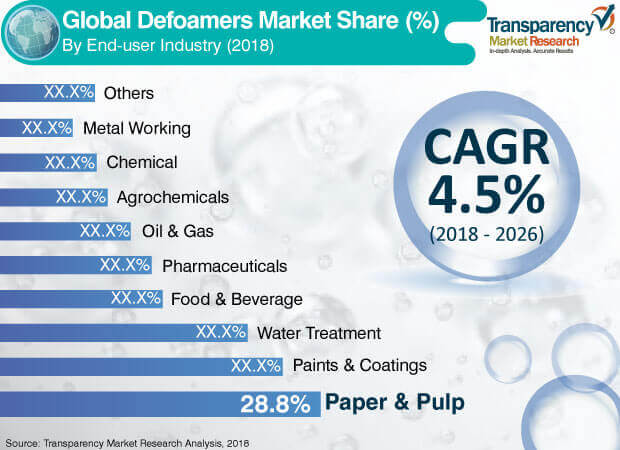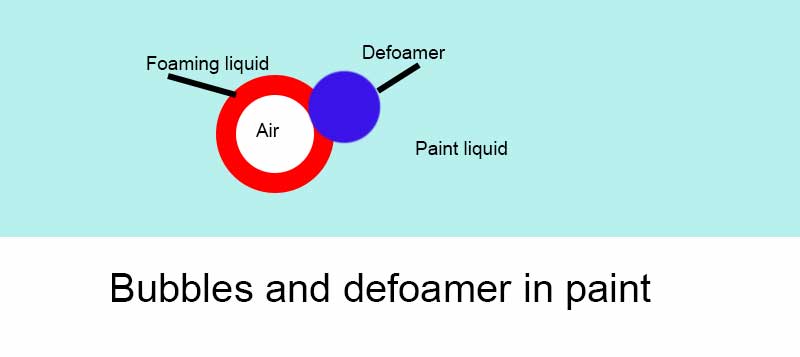Choosing the Right Defoamer for Your Particular Application Requirements
Picking the suitable defoamer for particular application requirements is a nuanced process that requires cautious factor to consider of numerous aspects, such as the foam kind, medium, and operating problems. Understanding the subtleties of defoamer performance-- including speed and persistence-- while likewise accounting for regulative and ecological variables is crucial.
Recognizing Foam Development
Foam development occurs when gas is caught within a fluid, creating a secure framework of bubbles. This phenomenon can considerably affect various industrial procedures, specifically in markets such as food manufacturing, pharmaceuticals, and wastewater therapy. The presence of foam can hinder mixing, decrease product top quality, and also result in operational inefficiencies.
Foam commonly forms because of a combination of elements, consisting of surface-active representatives, anxiety, and the qualities of the liquid phase. Surfactants reduced the surface tension of the liquid, promoting the development of bubbles that can coalesce and support. Frustration, whether from mechanical stirring or gas intro, enhances bubble formation, resulting in enhanced foam quantity.
Recognizing the auto mechanics of foam formation is vital for sectors aiming to optimize their processes. By recognizing the certain problems that advertise foam generation, organizations can execute approaches to reduce its effects. This expertise prepares for choosing appropriate defoaming agents that effectively target the one-of-a-kind challenges presented by foam in various applications. A comprehensive understanding of foam development is vital for improving performance and keeping product stability throughout various industries.
Sorts Of Defoamers Available
Numerous types of defoamers are readily available to resolve the obstacles positioned by foam in industrial applications. defoamers. Broadly categorized, defoamers come under three groups: silicone-based, non-silicone-based, and natural defoamers
Silicone-based defoamers are renowned for their effectiveness and stability throughout a wide variety of temperatures and pH degrees. They are usually utilized in applications where solid foam suppression is essential, such as in finishes, adhesives, and paints. Their reduced surface tension permits for fast foam collapse.
Non-silicone-based defoamers, commonly made from organic compounds, provide an alternative for applications conscious silicone deposits. These defoamers can be additional separated right into polyether and ester kinds, each tailored to satisfy details formulation demands. Non-silicone defoamers are regularly used in food handling and individual care items due to their compatibility with numerous solutions.
All-natural defoamers, stemmed from plant or pet resources, are gaining grip due to their environment-friendly profile. These items are particularly appealing in applications where regulatory compliance and sustainability are paramount, such as in agrochemicals and biotechnology.
Choosing the appropriate type of defoamer is crucial for maximizing performance and guaranteeing compatibility with details applications.
Trick Application Considerations
When picking a defoamer, it is necessary to take into consideration the certain application demands to ensure optimum performance. defoamers. Various industries have distinct requirements, such as food handling, pharmaceuticals, or wastewater therapy, and each application may call for distinct defoaming buildings
Trick factors to examine consist of the tool in which the defoamer will be utilized, whether it is water-based, oil-based, or a combination thereof. The temperature level and pH degrees of the application my response can also substantially affect the efficiency of a defoamer. Furthermore, compatibility with various other chemicals present in the system is vital to avoid unfavorable responses that can jeopardize efficiency.
Another vital consideration is the foaming behavior of the certain system. Understanding whether the foam forms promptly or gradually can direct the option of a defoamer that targets the origin successfully. Furthermore, the preferred speed of defoaming can influence the choice, as some applications call for fast action while others may endure slower defoaming processes.
Lastly, regulatory and ecological considerations need to not be neglected, specifically in sectors with rigorous compliance requirements. Selecting a defoamer that lines up with these variables guarantees both effectiveness and safety and security in the application.

Performance Screening Approaches
Evaluating the efficiency of a defoamer calls for a methodical strategy to testing that precisely measures its performance in certain applications. Various performance screening techniques can be employed to determine the optimum defoamer for a provided solution.
One usual approach is the bubble examination, which reviews the defoamer's capability to reduce foam volume over time. This examination involves producing a steady foam and after that adding the defoamer to observe the rate of foam collapse.

Inevitably, selecting the appropriate performance testing method depends upon the particular application and the sort of foam being attended to. Each approach supplies important information that can direct formulation changes and enhance the efficiency of the defoamer in practical applications.
Ideal Practices for Choice


Next, consider the defoamer's efficiency in regards to speed of activity and determination. A quick-acting defoamer may be necessary for procedures where fast foam suppression is crucial, while a much more persistent solution could be required for prolonged foam control. Additionally, review the ecological impact of the defoamer, including its biodegradability and any regulatory compliance requirements.
Conduct trials with picked defoamers to identify their performance in real-world conditions. This action is essential to confirm that the picked product fulfills performance assumptions. Finally, talk to makers or suppliers for technological support and advice, as they can offer valuable insights into item formulas and application methods. By adhering to these ideal methods, you can boost foam control effectiveness and make certain the long life of your procedures.
Final Thought
In recap, picking the suitable defoamer necessitates a comprehensive examination of different elements, including foam type, tool, operating problems, and environmental considerations. Recognizing the special attributes of foam formation and the available defoamer options is important.
Selecting the proper defoamer for certain application needs is a nuanced procedure that requires careful factor to consider of numerous aspects, such as the foam tool, kind, and more tips here operating problems.Selecting the best defoamer is important for accomplishing ideal efficiency in foam control applications. A quick-acting defoamer may be essential for procedures where quick foam suppression is critical, while a much more consistent formula may be needed for prolonged foam control.In summary, picking the ideal defoamer requires a thorough assessment of different variables, consisting of foam type, tool, operating conditions, and environmental considerations. Understanding the distinct features of foam formation and the readily available defoamer alternatives is crucial.